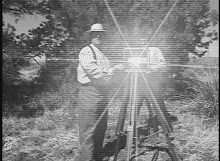Each of the following colorful metaphors calls for a tremendous stretching of the imagination vis-a-vis the vastness of time/space, anticipating unforeseeable events, and ingeniously envisioning new enterprise.
Red Shift
Red Shift describes how we perceive the expanding universe relative to our position on earth. The light from stars we see is from the distant past. Light coming to us from great distance shifts into the red spectrum. The greater the distance is the greater the red shift. In April, astronomers received data from NASA’s space-based Swift satellite that shows the most distant, farthest object is 13.1 billion light-years away.
Black Swan
Nassim Nicholas Taleb is the author of The Black Swan: The Impact Of The Highly Improbable. It explains how we deal with very hard to predict, very high impact events such as the plane attacks on the World Trade Centers on September 11 2001 in New York. In a nutshell, randomness occurs more than we believe. But we develop retroactive interpretations that provide a false sense of security and predictability after the fact. Taleb calls for a profound mind shift that accepts escalating unpredictability as the norm and not the other way around. The term Black Swan historically meant rarity in that only white swans were known in the West. This changed in 1697 when a Dutch expedition encountered the black swans of Australia for the first time. The meaning of Black Swan then evolved to signify not the impossible per se, but the impossible as possible. For Australians the Black Swan proudly symbolizes their antipodean culture as distinct from the white swan-ness of the northern hemisphere.
Blue Ocean
Blue Ocean Strategy is the title of a book by W. Chan Kin and R, Mauborgne from the institute of the same name at INSEAD. Essentially, this proven strategy promotes the idea that enterprise succeeds “by creating new demand in an uncontested market space, or a "Blue Ocean", than by competing head-to-head with other suppliers for known customers in an existing industry ... BOS frameworks and tools are designed to be visual in order to not only effectively build the collective wisdom of the company but also allow for effective strategy execution through easy communication.”
Blurring Boundaries, Quickening Magnitudes
In 1964, the philosopher Henri Corbin wrote, “The most astounding information of modern science regarding the physical universe remains inferior to [the imagination].” It appears that the more we learn, the subtler the line becomes between what is real and what is imaginary. This is not simple metaphor. Cosmologists and physicists are studying ever-larger vistas of space and ever-smaller units of matter. Just how fine is the line between mind and matter, imagination and reality? The answer is pithily summed up in a recent luxury car advert: “What if has become what is.” Or, as William Blake once noted, “What’s now proved was once only imagined.”



